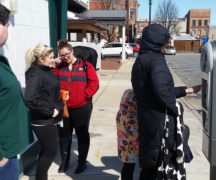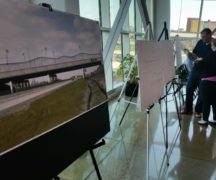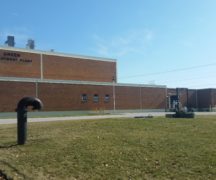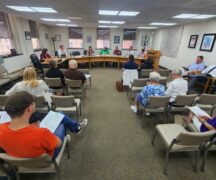By JAN LARSON McLAUGHLIN
BG Independent News
As Bowling Green officials consider how to divide the $3.3 million remaining in COVID relief funds, a request was made Monday that local businesses get their share of the pie.
Mary Vollmar, who said she has spoken to several local business owners, asked City Council how much money might be available to businesses. Some businesses did not qualify for grants at the time shutdowns were ordered – and many are still hurting, she said.
“These businesses are kind of between a rock and a hard place,” said Vollmar, whose son owns Flatlands Coffee in downtown Bowling Green.
Businesses employ people and bring tax revenue into the community, she stressed.
In February, the city asked citizens to fill out questionnaires ranking different projects for the American Rescue Plan Act funds.
But Vollmar said the business owners she has talked with want their needs considered, and are too busy to come to meetings.
“The business owners are really wanting to have input on that,” she said of the possible grants to businesses from the ARPA funds.
Some have expressed a desire to invest in maintenance or buy equipment to expand – but they need assistance, Vollmar said.
“They really are needing a tremendous amount of help,” she said.
Council President Mark Hollenbaugh suggested that interested business owners prepare presentations for the May 12 meeting, at 6 p.m., about the ARPA fund distribution.
Council member Nick Rubando agreed.
“We want to ensure for the entire community the money is going to the right places,” Rubando said. “It’s for people who have really suffered losses.”
Rubando thanked Vollmar for advocating for small businesses.
“Saving businesses is generally saving the community,” he said.
Bowling Green received $7.3 million last year in American Rescue Plan Act funds designed to help communities recover from the economic impacts of the COVID pandemic.
So far, the city has approved using the funds for:
- $3 million for residential street paving.
- $350,000 for MARCS radios to improve public safety communications.
- $250,000 for paving at City Park, including road widening, a walking path, and security improvements.
- $100,000 for inclusive playground at Carter Park.
- $300,000 for housing grants over three years.
That leaves about $3.3 million. A community questionnaire gave residents the opportunity to rank the importance of possible projects, and to suggest their own ideas. The survey included four categories of investments – downtown enhancements, parks and recreation, community development, and pedestrian and bicycle safety infrastructure.
The guiding principles being used by the city to prioritize projects for funding include criteria that the projects must have community-wide impact, and must avoid duplicated use of funds already in place.
Following are the projects people were asked to rank in each category:
Downtown enhancements
- Downtown building facade improvements.
- Alleyway improvements.
- Downtown public restrooms.
- Downtown dumpster enclosures.
- Downtown right-of-way redesign to widen sidewalks.
Parks and recreation
- Repave Carter Park parking lot.
- Roof replacement at community center.
- Outdoor pickleball courts.
- Shade structures at Eli Joyce Field in City Park, and at community center athletic fields.
- Paving trails at Simpson Garden Park.
Community development
- Electric vehicle charging stations.
- Plant trees within rights-of-way.
- Small business grants.
- Murals/public art.
- Oak Grove Cemetery capital improvements.
Pedestrian and bicycle safety infrastructure (Complete Streets)
- Repair existing sidewalks.
- Construct new sidewalks.
- Multi-use path from BG High School/Middle School to the community center and Cogans Crossing.
- On-street bicycle treatments like sharrows and bike lanes.
- Separated bike paths.





